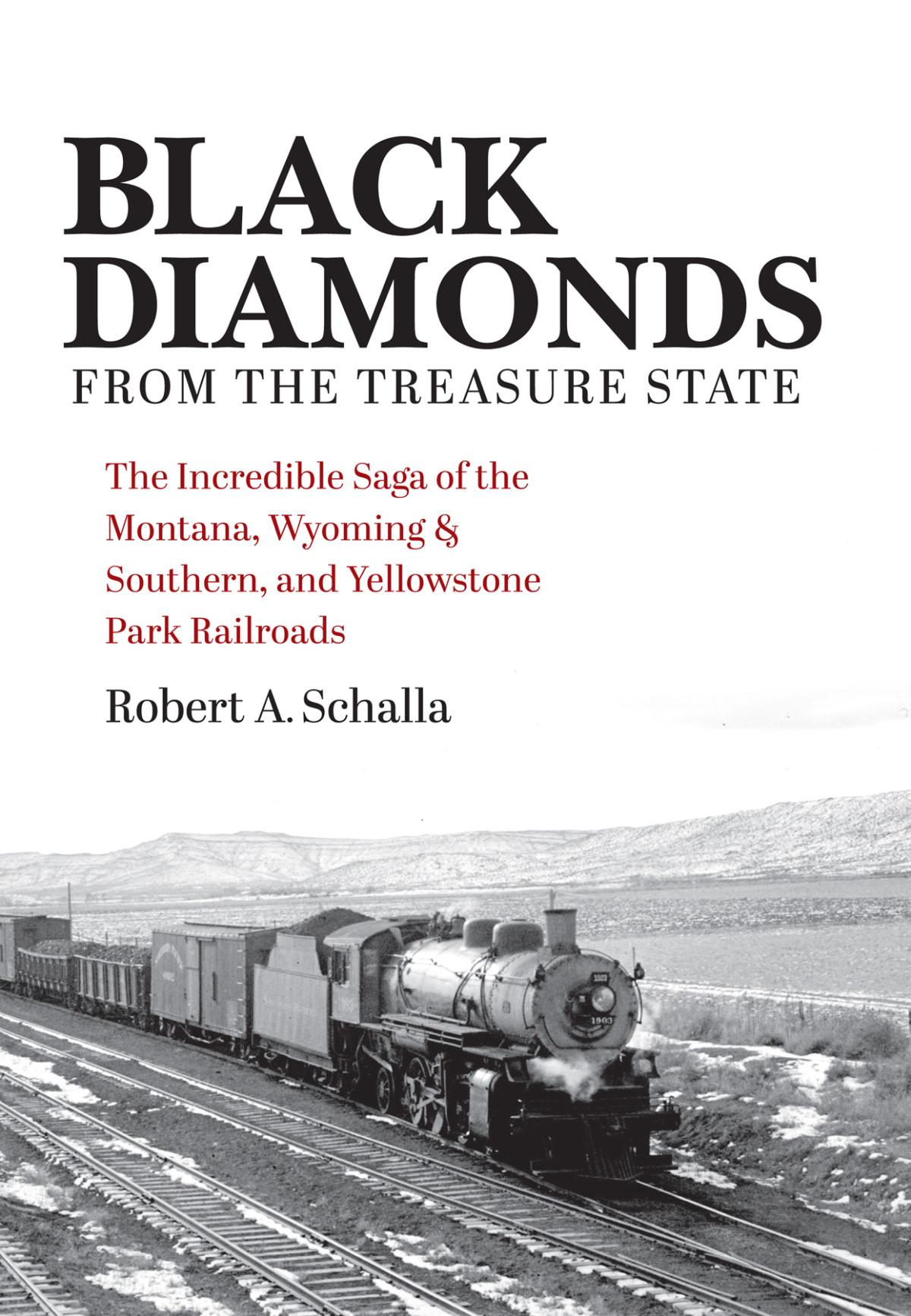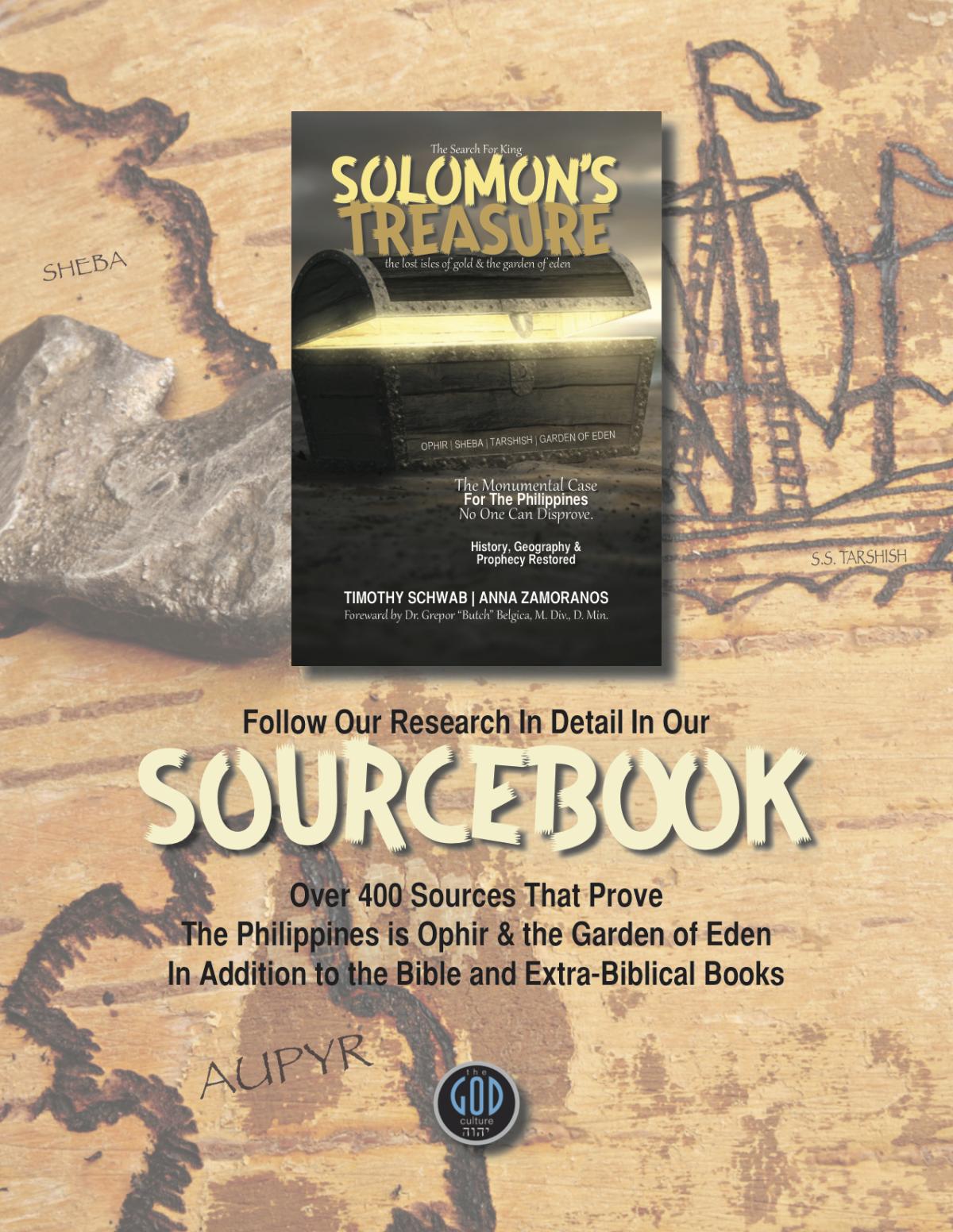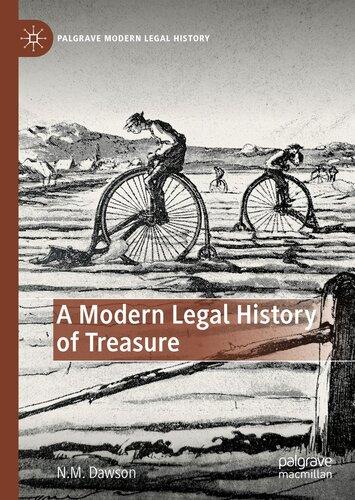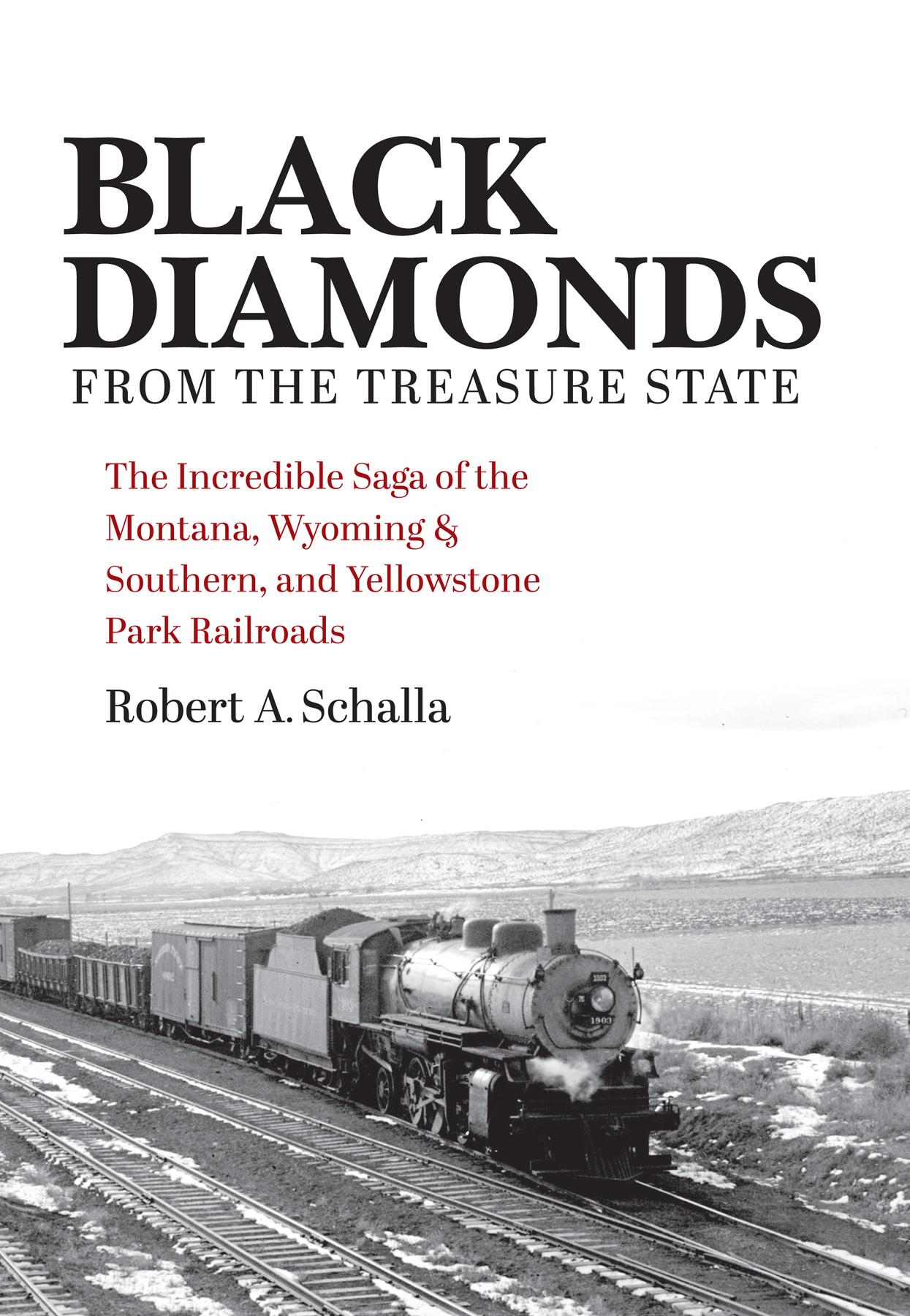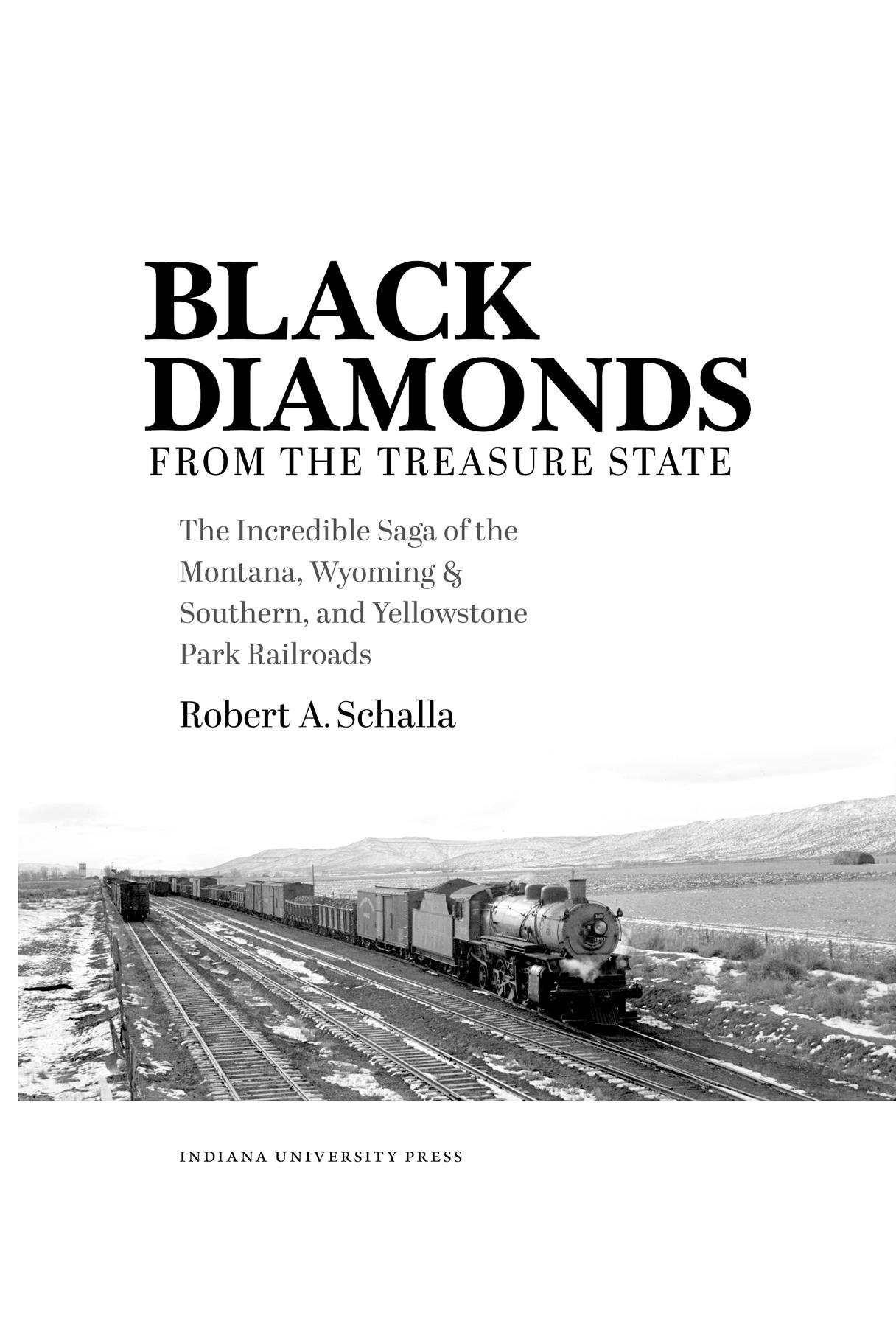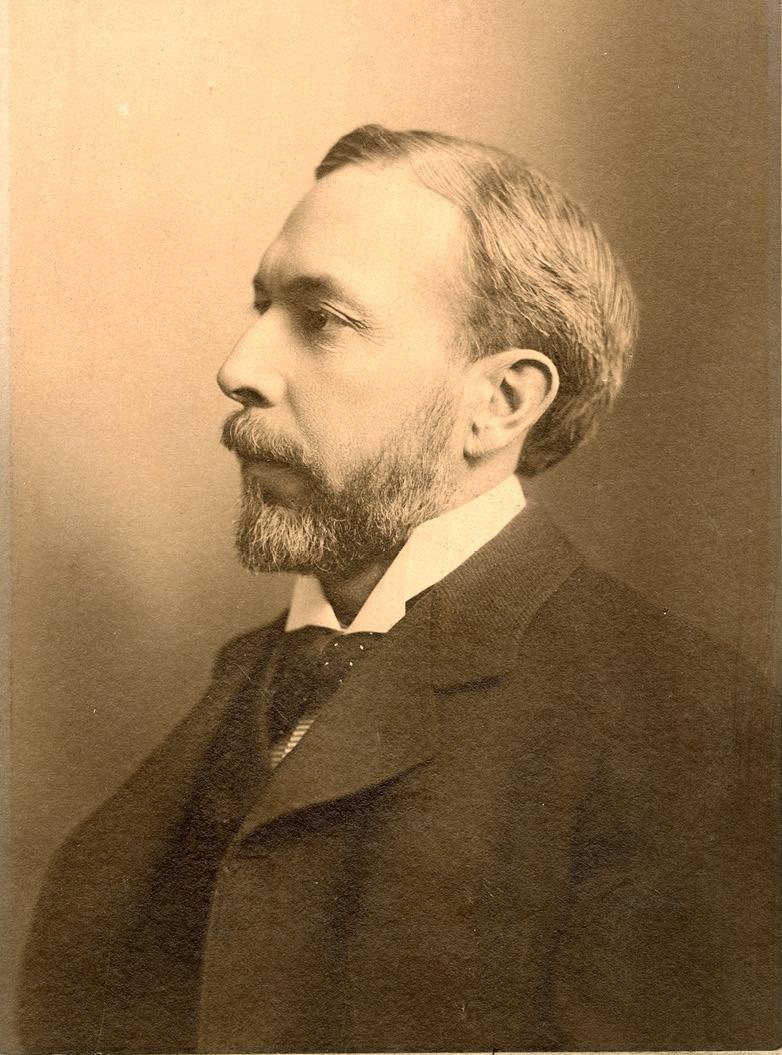Black Diamonds From The Treasure State Robert
A. Schalla
Visit to download the full and correct content document: https://ebookmass.com/product/black-diamonds-from-the-treasure-state-robert-a-sch alla/
More products digital (pdf, epub, mobi) instant download maybe you interests ...
Best Kept Secret (Colorado Black Diamonds Book 1) Emily
Silver
https://ebookmass.com/product/best-kept-secret-colorado-blackdiamonds-book-1-emily-silver/
Working Memory: State of the Science Robert Logie
https://ebookmass.com/product/working-memory-state-of-thescience-robert-logie/
Solomon's Treasure SOURCEBOOK Timothy Schwab
https://ebookmass.com/product/solomons-treasure-sourcebooktimothy-schwab/
A Modern Legal History of Treasure 1st Edition N.M.
Dawson
https://ebookmass.com/product/a-modern-legal-history-oftreasure-1st-edition-n-m-dawson/
The Treasure Hunt Hookup (Hollywood Bachelors Book 3)
Lila
Monroe
https://ebookmass.com/product/the-treasure-hunt-hookup-hollywoodbachelors-book-3-lila-monroe/
Overcoming the Oppressors: White and Black in Southern Africa 1st Edition Robert I. Rotberg
https://ebookmass.com/product/overcoming-the-oppressors-whiteand-black-in-southern-africa-1st-edition-robert-i-rotberg/
Radiance (Diamonds of the First Water Book 4) Sydney
Jane Baily
https://ebookmass.com/product/radiance-diamonds-of-the-firstwater-book-4-sydney-jane-baily/
The Lady's Daring Gambit (Diamonds of London Book 2)
Sandra Sookoo
https://ebookmass.com/product/the-ladys-daring-gambit-diamondsof-london-book-2-sandra-sookoo/
Last Resort: Treasure Trail - Book 3 Morgan Brice
https://ebookmass.com/product/last-resort-treasure-trailbook-3-morgan-brice/
RAILROADS PAST AND PRESENT
H. Roger GrantandThomas Hoback, editors
Recent titles in the Railroads Past and Present series
Pennsylvania Railroad
Albert J. Churella
Electric Indiana
Carlos Arnaldo Schwantes
SunsetCluster
H. Roger Grant
The RailroadPhotography ofPhilHastings
Tony Reevy
The Station Agentandthe American RailroadExperience
H. Roger Grant
The DieselThat DidIt
Wallace W. Abbey
Crossroads ofa Continent
Peter A. Hansen, Don L. Hofsommer, and Carlos Arnaldo Schwantes
Narrow Gauge in the Tropics
Augustus J. Veenendaal, Jr.
Amtrak, America’s Railroad
Geoffrey H. Doughty, Jeffrey T. Darbee, and Eugene Harmon
The Panama Railroad
Peter Pyne
Last Train to Texas
Fred W. Frailey
Transportation andthe American People
H. Roger Grant
American Steam Locomotives
William L. Withuhn
My Life withTrains
Jim McClellan
The RailroadPhotography ofLucius Beebe andCharles Clegg
Tony Reevy
Chicago Union Station
Fred Ash
John W. Barriger III
H. Roger Grant
Riding the Rails
Robert D. Krebs
Wallace W. Abbey
Scott Lothes and Kevin P. Keefe
BranchLine Empires
Michael Bezilla with Luther Gette
Indianapolis Union andBelt Railroads
Jeffrey Darbee
Railroads andthe American People
H. Roger Grant
Derailedby Bankruptcy
Howard H. Lewis
Electric Interurbans andthe American People
H. Roger Grant
The Iron Roadin the Prairie State
Simon Cordery
The Lake Shore Electric Railway Story
Herbert H. Harwood, Jr. and Robert S. Korach
The RailroadThat Never Was
Herbert H. Harwood, Jr.
This bookis apublication of
INDIANA UNIVERSITY PRESS
Office of Scholarly Publishing
Herman B Wells Library 350
1320 East 10th Street
Bloomington, Indiana 47405 USA
iupress.org
© 2024 by Robert A. Schalla
Allrights reserved
No part of this book may be reproduced or utilized in any form or by any means, electronic or mechanical, including photocopying and recording, or by any information storage and retrieval system, without permission in writing from the publisher. The paper used in this publication meets the minimum requirements of the American National Standard for Information Sciences Permanence of Paper for Printed Library Materials, ANSI Z39.48–1992.
Manufacturedin the UnitedStates ofAmerica
First Printing 2024
Library ofCongress Cataloging-in-Publication Data
Names: Schalla, Robert A., author.
Title: Black diamonds from the treasure state : the incredible saga of the Montana, Wyoming & Southern, and Yellowstone park railroads / Robert A. Schalla.
Description: Bloomington, Indiana : Indiana University Press, [2024] | Series: Railroads past and present | Includes bibliographical references and index.
Identifiers: LCCN 2023029019 (print) | LCCN 2023029020 (ebook) | ISBN 9780253068194 (hardback) | ISBN 9780253068217 (ebook)
Subjects: LCSH: Railroads United States History. | Yellowstone National Park. | Northern Pacific Railway Company History. | Montana, Wyoming & Southern Railroad Company History. | BISAC: TRANSPORTATION / Railroads / History | BUSINESS & ECONOMICS / Corporate & Business History
Classification: LCC HE2751 .S33 2024 (print) | LCC HE2751 (ebook) | DDC 385.0979 dc23/eng/20230824
LC record available at https://lccn.loc.gov/2023029019
LC ebook record available at https://lccn.loc.gov/2023029020
This bookis dedicatedto the memory ofmygoodfriend
JOHN FREDLUND, whosegrandparents John andFrances Chesarek ownedthe FirstandLastChance Saloon and Boarding House in Bearcreekduring the town’s heyday.
Bibliography
Index
ACKNOWLEDGMENTS
SIMPLY STATED, THIS STORY WOULD HAVE NOT BEEN WRITTEN without the encouragement and support of Montana historian Jon Axline. At the inception of this project, Jon not only shared his knowledge and photographs but also generously donated all of his research files on the subject to me. He graciously reviewed early drafts of the manuscript and offered numerous helpful suggestions and insights. Although I am not a historian by training, my initial meeting with Jon inspired me to dive deep into my research and fearlessly begin to connect the dots.
The few hours I spent discussing railroad history with Bill and Jan Taylor at their home near Lolo, Montana, probably unbeknownst to them, was immensely important to this project as well. Their practical advice on writing, publishing, and research helped convince me that I could do this.
My good friend Geoffrey Stone willingly waded through several early drafts of the manuscript and offered numerous insights into western history and railroads. His comments, corrections, and advice greatly improved the final product. I am also indebted to Gary Hughes for his assistance in creating the regional maps and to Jo Wiggins for sharing his extensive map database and preparing the detailed map of Belfry. Denver attorney Chris Hayes helped guide me through the arcane technicalities of several legal proceedings, Steve Durrett contributed his insights into corporate finance, and Dave
Bickerstaff contributed much appreciated last-minute help with computer graphics. Thanks must also go out to all the museum personnel and archivists across the country who graciously endured my repeated inquiries and requests. The assistance and guidance received from the editors and staff at Indiana University Press made the publication process a seamless endeavor. Numerous other individuals contributed their support and encouragement in various ways during the several years spent on this project, and I thank you all.
Finally, I must extend my warmest heartfelt thanks to my patient and supportive wife Jeannine, who not only put up with my reclusive and compulsive behavior during my research and writing but also cheerfully read several drafts of the manuscript. Her insights and encouragement helped to bring this project to fruition.
Needless to say, I have done my best to piece together a story that I believe to be true and accurate, but in some cases, I was forced to rely on scattered and disparate bits of information. In the end, I bear full responsibility for any errors of fact, omission, or interpretation.
“Treat Him in Every Way as an Irresponsible Fellow”
ON A BLUSTERY DAY IN LATE JANUARY 1891, FRANK AVERY Hall, a small-time businessman from Milwaukee, Wisconsin, stepped off a train at the Northern Pacific depot in Helena, Montana, and made his way uptown to the New Merchants’ Hotel. Located on Broadway not far from the state capitol building, the recently refurbished New Merchants’ was known for its elegant bar, billiard room, restaurant, and wide hallways carpeted with crimson velvet. One of the swankier establishments in Helena, it was the sort of place where prominent businessmen and politicians gathered to discuss the day’s events over a glass of good whiskey and a fine cigar. For Frank Hall, the upand-coming president of Reliance Wire Works, the hotel’s opulence must have been appealing. A parlor-level room with steam heat and electric lights cost him just $1.25 per night on the European plan; an upgrade to the American plan, with all meals included, added as little as $1.25 more.1
Tall, thin, and clean-shaven with dark, wavy hair, Frank Hall possessed boyish good looks, a flamboyant personality, and wry wit. At age twenty-three, he was brimming with self-confidence and ready to take on the world. Born in New York in 1868, the timing and circumstances of his move to Milwaukee are unknown, but in 1886, at the age of no more than eighteen, he and W. N. Fitzgerald, the son of a well-known local ship inspector, purchased Charles
Goehner’s wire works plant in Racine, Wisconsin. Hall and Fitzgerald changed the company name to Reliance Wire Works and immediately announced plans to invest $10,000 in order to expand operations. Where they got the money for this ambitious venture is unknown, but it suggests they may have come from families of at least modest wealth and had connections to the local business community. The Green Bay Weekly Gazette described Fitzgerald as a “promising young businessman.” Considering his ambitious nature and entrepreneurial flair, this portrayal could, no doubt, have been applied to Frank Hall as well. Said to be well known in the area, both Hall and Fitzgerald were previously associated with the manufacturing concern E. P. Allis & Company, an important employer in Milwaukee that would soon become known worldwide as farm equipment manufacturer Allis-Chalmers.2
A purveyor of fences, vine trainers, office railing, and window guards, Reliance Wire Works did not file Articles of Association with the Wisconsin Secretary of State until March 1887, by which time Hall and Fitzgerald had brought in a third, somewhat older partner, named Oscar F. Lindman. Hall’s trip to Montana four years later was likely prompted by the reluctance of a certain Fred M. Wilson to make good on a $453.85 bill owed to Hall’s company. Hall sued Wilson and eventually won a judgment against him. Whether he ever received payment is unknown; however, the trip west piqued Hall’s interest in the Treasure State, and he would soon return.3
With one plant operating in Racine, in late 1892 Hall changed the company name to Reliance Wire and Iron Works and in a bold move acquired the Beloit Architectural Works in Beloit, Wisconsin. This expansion added a second plant to his operations but appears to have left Reliance financially overextended. Just a year later, deep in debt, Reliance Wire and Iron was bankrupt, a victim of the Panic of 1893. Reliance Wire’s failure may have been the first time Hall faced financial ruin, but it would not be the last. As the country slipped into a serious economic depression, 1894 found Hall both out of work and out of money. His activities and financial struggles during the next several years are obscure, but he returned to Montana
several times, visiting Butte in 1895 and Helena a year later. Whether he was seeking employment or business opportunities is unknown.4
In November 1897, Hall once again ventured out to the Treasure State. This time as the representative of a Chicago syndicate that hoped to raise $30,000 to underwrite the construction of a rye whiskey distillery. Having developed his skills as both a persuasive and elegant speaker, Hall diligently pursued his sponsors’ goals by making presentations in Billings, Great Falls, and Bozeman. As an enticement, he described how the distillery would provide a muchneeded boost to the local economy while it produced forty barrels of “a splendid brand of rye whiskey” per day. He went on to explain that the plant would benefit local farmers by providing a yearly market for 120,000 bushels of rye. Hall’s arguments were persuasive, but despite his best efforts, he was unable to raise the capital his backers sought and his mission ended in failure. But his activities did not go unnoticed. The Billings Weekly Gazette described him as presenting his proposal in a “very favorable and pleasing light.” For Frank Hall the Gazette’s praise meant little. When he returned to Milwaukee, he was once again out of work and ready to take on whatever might come next.5
Despite his numerous setbacks, the indefatigable Milwaukee salesman and promoter once again headed west to Montana in February 1898, this time to begin work on a highly speculative railroad project. In the late 1890s, promoters were making fortunes in the railroad business, and having become intrigued with the business opportunities in Montana, Hall was anxious to try his hand at this new and potentially lucrative profession. His partners in this new enterprise were Willis A. Ritchie and William Wallace Davenport Turner, two well-respected businessmen from Spokane, Washington. Their plan was to build a one-hundred-mile-long railroad that would cross the Gallatin Valley and then follow the Gallatin River through miles of uninhabited wilderness to a place called Dodge Creek, where Ritchie and Turner believed there was a vast coalfield.6
Ritchie, a thin man with prominent ears that accentuated his narrow face, was a renowned architect who had invested in numerous mining ventures in several western states. Although he had begun his career in Winfield, Kansas, in 1889 he moved to Seattle and relocated to Spokane four years later. During this time, he was responsible for the design of numerous public buildings and county courthouses throughout the state of Washington, one of the more notable being the famous Jefferson County courthouse in Port Townsend. Hall’s other partner, William W. D. Turner, a sturdy-looking man with dark, wavy hair and a bushy mustache was born and raised in Missouri. An attorney by training, Turner had served in the Union army during the Civil War and attained the rank of colonel. When the war ended, he moved to Wisconsin and opened a law office in Ripon, about forty miles northwest of Milwaukee. He served in the state legislature for a time before deciding there was more opportunity out west.
Turner’s move to Spokane proved his instincts were correct, and he soon made a fortune investing in gold and silver mines, most notably the Le Roi mine near Rossland in British Columbia. How Frank Hall, a whiskey distillery promoter and ex-president of a bankrupt wire company, became acquainted with these two prominent Washington businessmen is a mystery. In Turner’s case, there may have been a Wisconsin connection. What that connection might have been is unclear, unless it involved some tie to Hall’s extended family. The fact that Turner departed Wisconsin in 1885, when Hall was a teenager, makes it seem unlikely they would have ever crossed paths. Why Turner and Ritchie took Hall on as their partner is an even greater mystery. Having no prior railroad experience, Hall’s youth and energy might have been enough to impress them. Or perhaps they were swayed by his witty, gregarious personality and persuasive salesman’s charm. Spokane’s SpokesmanReview added to the mystery by describing Hall as “a moneyed man” from Milwaukee, which seems an unlikely appellation given his apparent lack of success in recent business activities. Perhaps Hall portrayed himself as “a moneyed man” to gain Turner and Ritchie’s
trust. If this was the case, they should have looked into his background a little more closely.7
Articles of Incorporation for the Gallatin Railroad Company of Spokane were filed in late February 1898 with William Turner, Willis Ritchie, and Frank Hall listed as officers and Llewellyn A. Luce of Bozeman serving as the firm’s general counsel. The seemingly incongruous name originated from a decision to incorporate the company in Washington State, where the filing fee was a mere $7.75, rather than in Montana, where it would have cost $503. The railroad the partners envisioned was a huge undertaking that would start at Three Forks, Montana, extend eastward across the agricultural lands of the Gallatin Valley, and then follow the Gallatin River south up its narrow, rugged canyon to Dodge Creek (presentday Taylor Fork of the Gallatin). Here Willis Ritchie confidently claimed, “There are some very rich and extensive coal fields . . . which the company has purchased.” He went on to explain, “The coal fields embrace thousands of acres and the road is designed with only one object in view, and that is to provide means of transportation to get our product to the market.” According to Ritchie they had already completed a survey of the proposed route and had interested “a number of eastern capitalists” in the project. The problem with Ritchie’s plan was that the coalfields did not exist. Although a few coal beds were present in the Dodge Creek area, none of them constituted a commercial deposit. Ritchie, it appears, had been grossly misinformed by whoever sold him the property.8
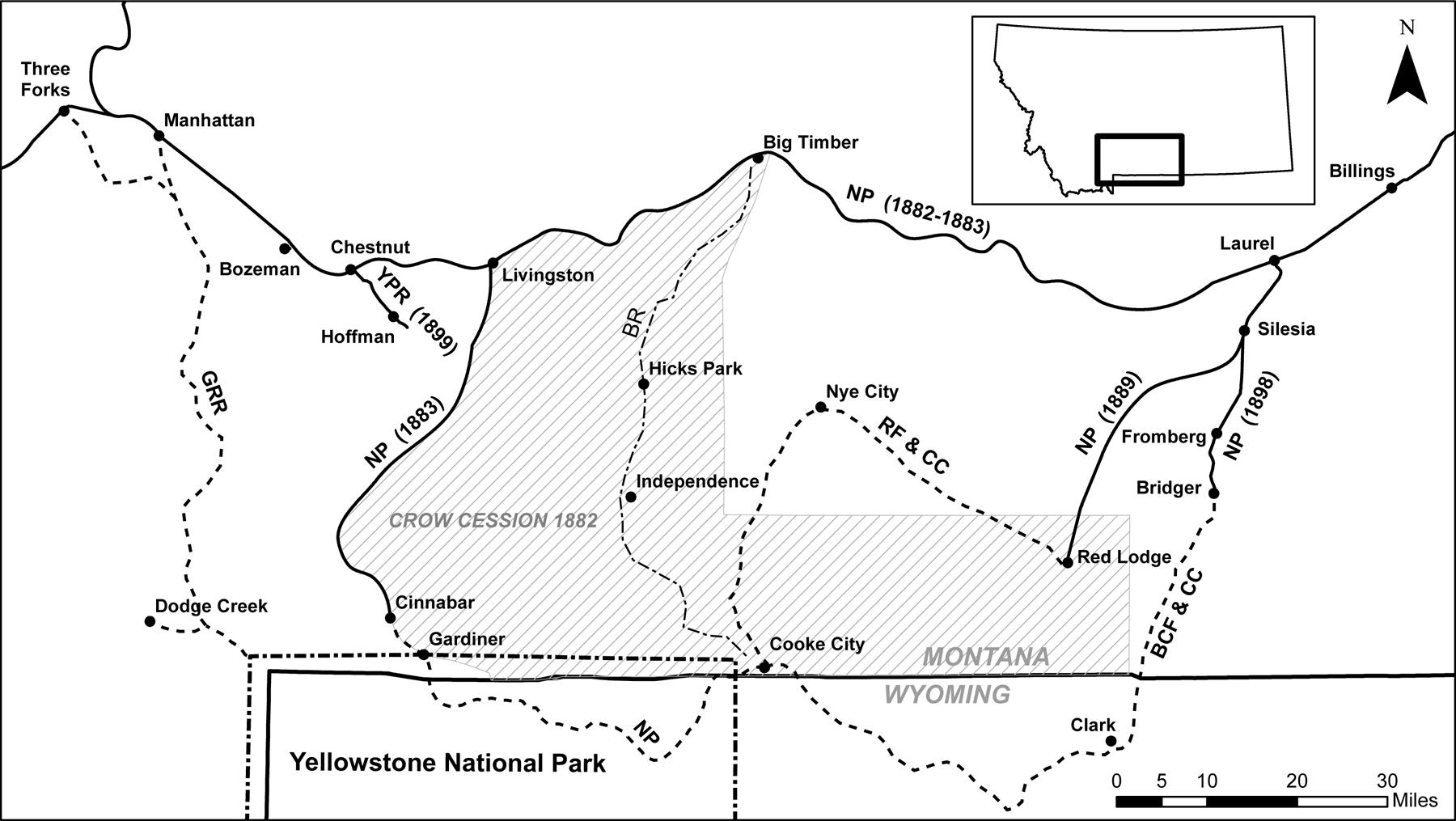
Map of south-central Montana showing the Crow Cession of 1882 and railroad development through 1900. NP (Northern Pacific); YPR (Yellowstone Park Railway); proposed lines: GRR (Gallatin Railroad); RF&CC (Rocky Fork & Cooke City); BCF&CC (Billings, Clark’s Fork & Cooke City); BR (Boulder River route).
Once the incorporation papers were signed, Frank Hall, the company’s vice president and general manager, assumed responsibility for day-to-day operations and moved to Bozeman. But he soon headed east to New York to meet with Ritchie’s “eastern capitalists” and to Washington, DC, to discuss their proposed route with government officials. Upon his return in April, he announced that permission had been granted by the federal government to run their line all the way to Yellowstone National Park, an extension that was probably not part of Willis Ritchie’s original plan. Curiously, at the same time, he made no mention of Ritchie’s supposed East Coast investors. Nevertheless, Hall was enthused about his new venture and was convinced that local farmers would be supportive. His next move was to solicit their help by requesting they donate land for the right-of-way and complete the grading of the roadbed
across their property for free. Sadly for Hall, his appeals for voluntary support fell on deaf ears.9
While Hall was busy trying to garner local support, the project suffered a severe setback when Willis Ritchie, perhaps having received discouraging news from his investors, or possibly more accurate information regarding the coal lands he had purchased, dropped out of the project. William Turner, seemingly unconcerned, promptly replaced him with his younger brother George, an attorney who had recently been elected to the US Senate. An agreement was soon formalized to give Hall and each of the Turner brothers onethird of the company stock. Hall retained his position as vice president and general manager.10
In mid-June 1898, Hall optimistically informed the Anaconda Stavndard that the first fifty miles of the Gallatin Railroad would be completed that summer, enough he said, to bring in most of that year’s wheat crop. Then, in an apparent overreach of his geographic knowledge, he also claimed that when complete the railroad would reach to within three miles of Mammoth Hot Springs. Having likely never visited the area, Hall did not elaborate on exactly how he planned to navigate his way through the several mountain ranges between the Gallatin River and Mammoth. In the end, it was just a lot of fanciful talk, a talent that Hall seems to have cultivated to some great extent during his years as a salesman. As spring passed into summer and the anticipated local support failed to materialize, he came to realize that locals had little interest in a railroad up the Gallatin Valley. When William Turner arrived in Bozeman in late June to meet with Hall, he found him despondent. Although the lack of local support was a major setback, Hall and Turner soon learned that a group of coal mine operators in the Trail Creek area south of Bozeman Pass, having been rebuffed by the Northern Pacific Railway (NP), were anxious to have someone build a railroad to their mines.11
The Livingston Coal Field, of which Trail Creek was a part, had been an important source of fuel for the NP and smelters across Montana since 1883, but by 1898, much of the production was in
decline. Mines near the NP mainline at Timberline had closed in 1895 and operations at Cokedale, near Livingston, were nearing their economic limit. The only remaining mines of any significance were located on the mainline at Chestnut and Mountain Side. But just a few miles to the south, on the hillsides above Meadow and Trail Creeks, thick beds of the same high-quality bituminous coal lay virtually untouched due to the lack of reliable transportation. The group that approached Hall and Turner was led by influential state senator Charles W. Hoffman who saw a great opportunity in the development of these resources. Hoffman’s experience in the area went back many years, having previously operated mines at both Timberline and Chestnut. Being aware of the coal along Trail Creek, as early as 1888 Hoffman had proposed the construction of a railroad to tap those reserves, but ten years later, his vision remained unfulfilled.12
According to the Helena Daily Independent, after meeting with Hoffman, Hall made several trips to the area and “ascertained the nature and extent of its coal,” a considerable achievement for someone with no training in either geology or engineering. With this presumed knowledge, Hall convinced William Turner to return to Bozeman to have a look for himself. Turner, who had a bit more experience evaluating mining properties, liked what he saw, negotiated a tonnage guarantee with Hoffman, and then authorized the start of construction. Although a short branch line to some coal mines was not part of their broader vision for a regional carrier servicing the Gallatin Valley and Yellowstone National Park, the Gallatin Railroad partners seem to have concluded that the Trail Creek branch might be a worthwhile step toward getting their larger venture started. Having made the decision to proceed, Hall excitedly announced on June 28 that they were seeking construction bids and then boldly predicted that trains would be running on what he referred to as the first section of the Gallatin Railroad within ninety days.13
How the partners intended to finance a project with a total cost likely to exceed $100,000 is unknown. But Hall’s initial step was to
seek the help of the NP, and in July, he traveled to St. Paul, Minnesota, to meet with NP president Charles S. Mellen. A tall, balding man with a prominent chin and commanding presence, the forty-five-year-old Mellen lacked a college education but had nevertheless managed to work his way to the top of his profession. Given his background, it can be imagined that Mellen was somewhat amused when Hall, a dapper, smooth-talking thirty-year-old from Bozeman with no railroad experience, sat down in this office and tried to convince him that the NP should take a mortgage on a yet to be built branch line in Montana.14
Despite Hall’s obvious inexperience in finance, Mellen listened to his proposal with interest and then patiently explained to him not only the legal pitfalls involved in his scheme but also the fact that a mortgage would amount to little more than an unsecured loan, something the NP was not willing to consider. Nonetheless Mellen was intrigued and saw enough benefit in the potential traffic from the Trail Creek mines that he decided to support the project. Because of NP’s tight finances, rather than a cash loan, Mellen offered to supply Hall with construction materials from company stockpiles, the cost of which would be repaid over time. Then, having taken the measure of Hall, Mellen allowed that he was willing to go through with the deal only if Hall could furnish “a note of your Company, endorsed personally by responsible parties.” By this, there is little doubt, he meant the Turner brothers.15
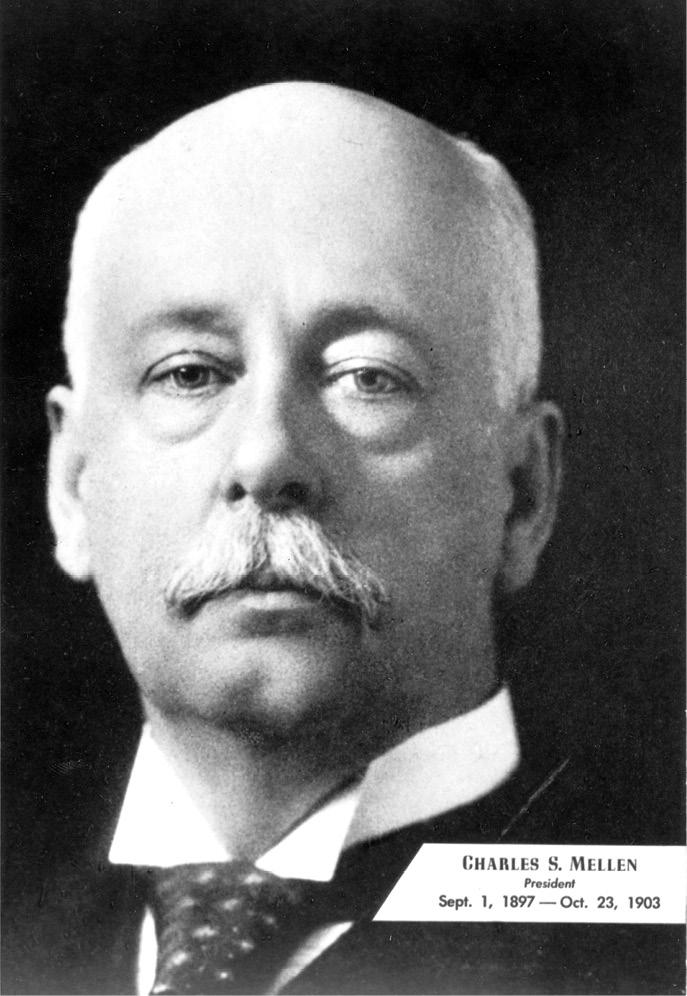
Charles S. Mellen, Northern Pacific Railway president (1897–1903). Mellen’s dealings with Frank Hall left him both frustrated and unimpressed. (Minnesota Historical Society).
The Turners soon agreed to Mellen’s terms, but funding for the remainder of the project remained an issue. Where these funds eventually came from is unknown, but it is likely that the Turners invested their own money and convinced some of their associates in Spokane to buy into the venture as well. Additional funding may have come from Charles Hoffman and the other mine owners. However the money was raised, it was soon clear that contracts were let and work begun before the project was fully funded. Whether this was an oversight or a decision driven by the desire to move forward before winter is unclear. According to one account, the motivation was the tonnage agreement with Hoffman that stipulated a completion date for the line. It could also have been influenced by assurances from Frank Hall that he could easily raise more money
once construction was under way. Regardless of the circumstances, in August 1898, Hall opened a “handsome office” in the Bozeman City Hall and the Gallatin Railroad partners let a contract to the firm of Cook and Woldson to build an eleven-mile branch from the NP mainline near Chestnut to the mines on Trail Creek.16
Named for Colonel John D. Chesnut, who opened the first coal mine in the area in 1867, the town of Chestnut was located just east of the narrow canyon of rugged limestone and quartzite outcrops that carries Rocky Creek to the broad alluvial plain on the outskirts of Bozeman. Situated four miles west of the summit of Bozeman Pass on the north side of the canyon in a grassy alcove surrounded by steeply tilted gray and tan beds of sandstone with interbedded coal, the Chestnut or Rocky Canyon mine had been operated by the NP since 1891. A mile to the east was an even larger complex called the Mountain Side Mine.17
The railroad that Hall and the Turners planned to build would start about a half mile east of Chestnut at a siding near the Mountain Side Mine and swing through a tight 180-degree curve to the southwest past the mine workings before turning southeast to follow Meadow Creek’s wooded south bank up a broad U-shaped valley on a grade that gradually increased from 1 to 3 percent. After about six miles, the line flattened as it emerged from the trees and crossed a low, grassy divide into the Trail Creek drainage. From that point, it was less than a mile to a stagecoach stop called Mountain House and the Hoffman mine. The Cox, or Kountz, mine was about a mile beyond the Hoffman and the Cook and Bell mine (later Maxey Bros. or Chimney Rock mine) about three miles farther down the drainage to the southeast. The valley sides and floor being composed of mostly stream gravel and shale would present no major construction problems. The entire route would use light fifty-sixpound rail supplied by the NP spiked to locally cut, rough-hewn ties laid on a narrow, unballasted roadbed. Although the grades were reasonable, curvature at one point was near ten degrees, close to the maximum allowed on an industrial type railroad.18
A month after signing the construction contract William Turner gave a detailed account of their plans to a reporter from the Spokane Spokesman-Review that was picked up by the Anaconda Standard. According to Turner, the line to Trail Creek was just the beginning. He explained that in addition to the coal mine branch, they still intended to build a one-hundred-mile-long regional line starting at a point near Bozeman, or possibly Manhattan near the Altenbrand elevators, that would follow the Gallatin River and terminate near the petrified forest in Yellowstone National Park. According to Turner, their principal goal was to tap the area’s rich agricultural lands, specifically its world-renowned barley crop, while at the same time providing tourists with an alternate route to the park. He explained that visitors arriving via the NP’s Park Branch, or his new line, could traverse the park and depart via the other railroad. The Gallatin line would thus capture half of the everincreasing tourist traffic. With this in mind, he also informed the reporter that to more accurately describe their new vision, he and his partners had decided to change the name of their company to the Yellowstone Park Railway. Then, with a promoter’s zeal, or perhaps just an overactive imagination and a lot of misinformation, Turner went on to describe the great coal, asbestos, gold, and copper deposits to be found along the railroad’s proposed route all of which would prove to be illusory.19
Turner’s plans for the Yellowstone Park Railway made no more sense than the earlier Gallatin Railroad. Construction up the Gallatin River canyon would be an expensive and daunting task with little prospect of significant returns. The proposed terminus near the northwest corner of Yellowstone National Park, some twenty miles south of present-day Big Sky, was an area of mostly uninhabited wilderness and investors giving the project the least scrutiny would have realized there was little merit in Turner’s proposal. Nonetheless, confident of their ultimate success, and hoping to establish himself as a prominent member of the local business community, in November 1898, Hall vacated his office in city hall and moved into even more spacious accommodations in the Masonic Block of
Bozeman’s central business district at the corner of West Main and South Tracy Avenue. According to one report, Hall spared no expense in making all of the rooms in his new office comfortable and elegant with new paint, paper, and furniture. The new company was incorporated in Montana in December and capitalized at $1.5 million, each of the three partners contributing $1,000 to the start-up.20
A new railroad was the kind of news that generated excitement and attracted attention across the state. With construction about to commence, on August 2, 1898, Frank Hall advertised for twenty tie makers with the promise that the company would pay “top wages.”
Three weeks after posting his ad in the Helena Daily Independent, when only about two miles of brush had been cleared from the rightof-way, that same paper eagerly reported that “those who saw the smoke from the successive brush piles could almost imagine they saw a locomotive rushing around the mountain.” Riding a wave of local enthusiasm, two months later Hall let it be known that as soon as the line was complete, he would offer an excursion to anyone in Bozeman who wished to visit the mining camps or just wanted to ride on his new railroad.21
Due to numerous delays, the railroad was not completed as planned. It was early 1899 before tracks finally reached the Hoffman Mine, and there, with only seven miles of the eleven-mile branch completed, the project stalled. This hiatus was likely due to the project’s inadequate funding, as construction to that point had not been without its share of problems. As early as November, it appears that Hall had failed to make a required payment to the NP. When this issue was brought to light by NP’s Second Vice President John W. Kendrick, Hall’s glib response was that there must have been a misunderstanding about when the payment was due. Hall then turned the table on Kendrick and complained that NP was not supplying the promised rails in a timely manner. “We have our ties distributed ahead of us and had figured on completing the line to the mine by next Tuesday, weather permitting,” Hall told Kendrick in a December 1 letter, “and here we are, tied up completely without a rail after receiving advice that another shipment was being loaded.”
Hall’s response appears to have been little more than a subterfuge, as he was probably out of money and attempting to buy time while seeking additional investors. In January, as work ground to a halt, the general contractor, Cook and Woldson, filed a mechanic’s lien against the Yellowstone Park Railway (née Gallatin Railroad) for unpaid construction bills. Hall and the Turners disputed the contractor’s claim and refused to pay, saying that the railroad had been overcharged. The crux of the disagreement was the volume of dirt and rock that had been excavated during construction. But, again, this could have simply been another distraction aimed at buying time for Hall to raise more money.22
John W. Kendrick, general manager and later second vice-president of the Northern Pacific Railway. Kendrick hoped that the Yellowstone Park
